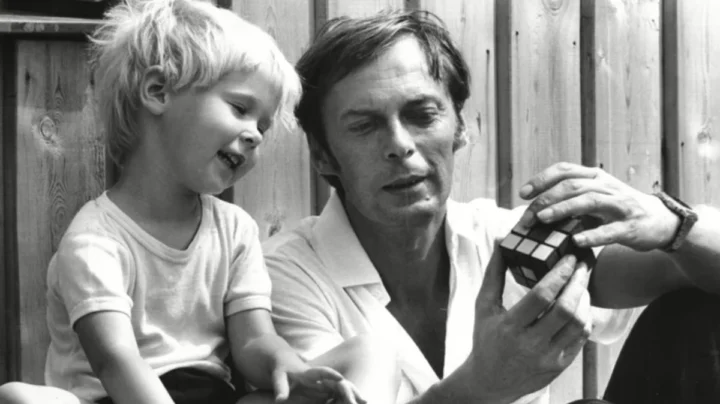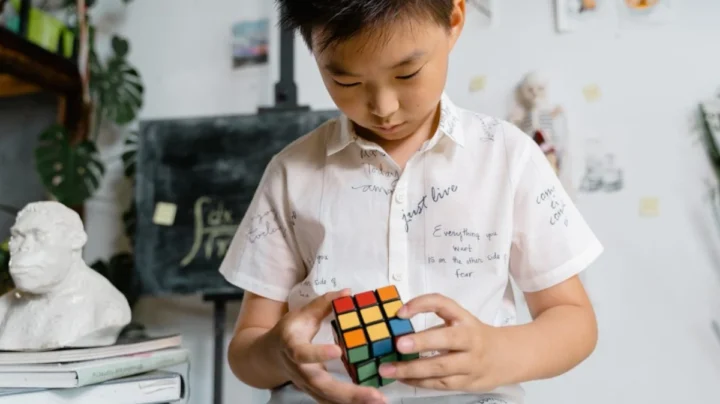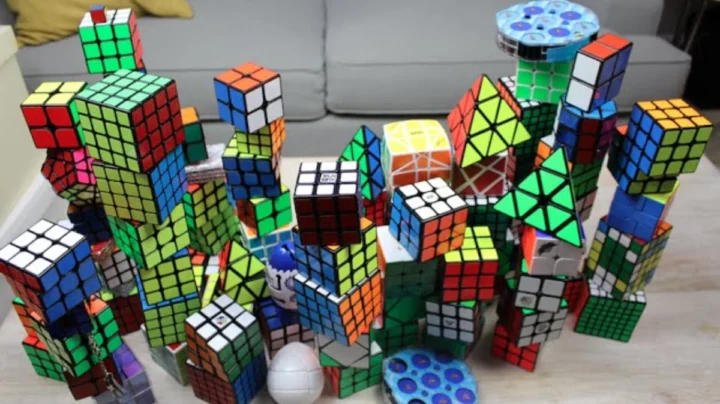Many people know it simply as the Rubik’s Cube. The invention of Hungarian Erno Rubik was created in 1974 and, a few years later, it spread all over the world. Who has never despaired trying to solve the Rubik’s Cube?
There must be no one who does not know the Rubik's Cube
In fact, the Rubik's Cube is one of the most iconic toys in the world, challenging the minds of millions of people since its invention.
Created in 1974 by Hungarian architecture professor Erno Rubik, it was originally conceived as an educational tool to teach three-dimensional geometry concepts to his students.

The first time took me weeks: there are 43 trillion permutations!” ... Erno Rubik with his daughter Anna in 1981. Photo: ANL/Rex Shutterstock
However, what began as a simple model to explain principles of space and shapes quickly became a worldwide phenomenon of entertainment and logic.
The first name given to the cube was "Magic Cube", and Rubik did not intend to create a commercial puzzle.
Initially, he used the cube to illustrate group theory and geometric transformations, but when he gave the cube to other teachers and students, he realized the enormous potential of his invention as a hobby.

Em 1975, Rubik patented the design in Hungaryand in 1977 the cube began to be mass produced.
However, it was only in 1980 that the toy exploded in global popularity, after being licensed to the American company Ideal Toy Corporation. It was then that the name was changed to "Rubik's Cube" and it began to be sold worldwide. In the first few years, millions of units were sold, becoming one of the best-selling toys of the 1980s.
The cube challenge
The Rubik's Cube consists of a puzzle with six faces, each covered with nine colored squares that can be rotated in three directions.
The goal is to get all the faces of the cube to have the same color on each side, which seems simple, but in practice, it is extremely challenging.
The possible combinations of moves number in the... trillions, but there is only one correct solution.

Despite the challenge the cube poses, millions of people have tried to solve it over the decades. Some can solve the cube in minutes or even seconds, while others can spend hours or even days without finding the solution.
Curiosities about the cube
- Speed records: O speedcubing is the term used for the practice of solving the Rubik's cube in the shortest possible time. The current world record belongs to the American Max Park, who managed to solve the cube in just 3.13 seconds in 2023.
- The cube in space: The Rubik's Cube has even made it into space! In 1995, astronaut Chris Hadfield took a Rubik's Cube to the International Space Station. He wanted to see how the cube behaved in zero gravity and ended up solving it in space.
- The formula for solving the cube: Mathematicians and puzzle enthusiasts have discovered that any configuration of the Rubik's Cube can be solved in 20 moves or less. This number is known as the "God Number", a reference to the idea that even an omniscient entity would not need more than 20 moves to solve the cube.
- Cultural influence: The Rubik's Cube has appeared in numerous films, television shows, and video games. One of the most notable examples is the 2006 film "The Pursuit of Happyness," in which the protagonist, played by Will Smith, impresses a businessman by solving the Rubik's Cube.
- Cubes with different numbers of faces: Although the original cube has 3x3 squares on each face, more difficult versions have been created, such as the 4x4 cube (called the Avenger's Cube) and even the 17x17 cube, intended for true enthusiasts.
And nowadays?
Even with the emergence of many other puzzles and electronic toys, the Rubik's Cube continues to be popular. The Internet has helped to revive interest in the cube, with millions of tutorials and videos of people solving it in various ways.
The practice of speedcubing It has become a subculture of its own, with international competitions and thousands of fans around the world. It is also used as an educational tool in areas such as mathematics and computer science, helping students develop problem-solving skills and logical thinking.
Fifty years after its invention, the Rubik's Cube is much more than just a toy: it is an intellectual challenge, a cultural piece and an object of fascination. Now, try solving it again...
Read also:
Source: pplware.sapo.pt


